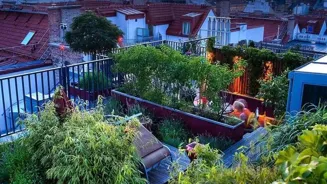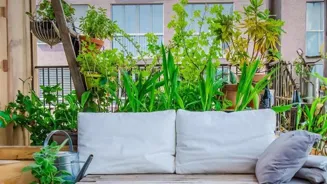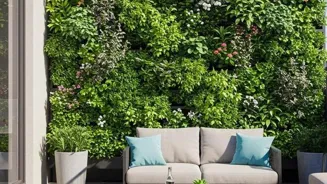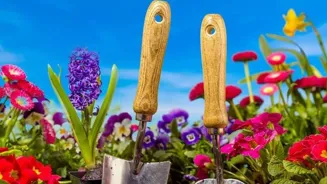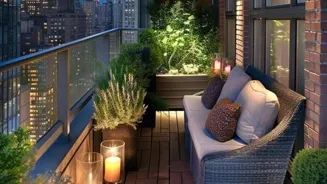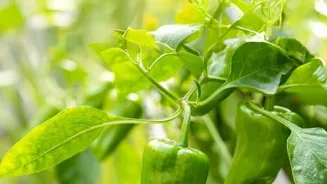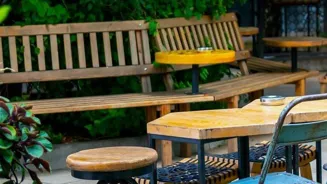Discover 7 Time-Tested Tips for Thriving in Urban Gardening! Transform your urban space into a green oasis
In the concrete jungles of our Indian cities, a touch of green can be a real lifesaver. Urban gardening,
or growing your own plants in the city, is becoming increasingly popular.
It's not just a trendy hobby, it's a way to reconnect with nature, get some exercise, and even grow your own fresh produce. But navigating the challenges of limited space, pollution, and unpredictable weather can be tricky. Fear not, aspiring green thumbs!
We've got you covered with seven time-tested tips to help your urban garden flourish. Whether you have a sprawling terrace, a tiny balcony, or just a sunny windowsill, these tips will guide you towards a thriving and rewarding gardening experience.
So, put on your gardening gloves, grab your trowel, and let's get started on transforming your urban space into a green oasis!
Location, Location, Location: Finding the Perfect Spot
Just like in real estate, location is key in gardening too! Before you even think about planting anything, observe your space. How much sunlight does it get? Which direction does it face? Most vegetables and flowering plants need at least six hours of direct sunlight a day to thrive.
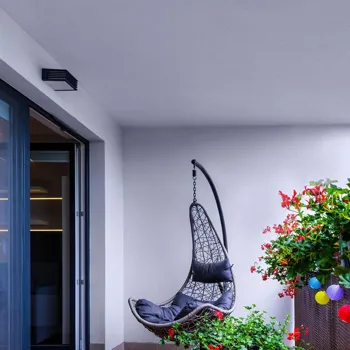
If your balcony faces south, you're in luck! East or west-facing balconies get a good amount of morning or afternoon sun. North-facing balconies, however, are often the shadiest and best suited for shade-loving plants like ferns, spinach, and some leafy greens.
Even if you only have a small windowsill, you can still grow herbs like basil, mint, and coriander. Consider factors such as wind exposure, as strong winds can damage delicate plants. If you live in a particularly windy area, you may need to provide some wind protection with screens or trellises.
Also, think about accessibility. Choose a location that is easy to reach for watering, weeding, and harvesting.
Container Crazy: Choosing the Right Pots & Soil
Containers are the heart of urban gardening. From humble terracotta pots to recycled buckets and even grow bags, there's a container for every budget and aesthetic. The key is to choose the right size for your plants. Bigger plants need bigger pots to accommodate their root systems.
Make sure your containers have drainage holes to prevent waterlogging, which can lead to root rot. Now, about the soil – don't just grab any old soil from the roadside! Urban gardens need well-draining and nutrient-rich soil.
The best option is to use a potting mix specifically designed for containers. You can also make your own mix by combining garden soil, compost, and cocopeat. Compost adds nutrients and improves water retention, while cocopeat helps with drainage. Consider the material of your container as well.
Terracotta pots are porous and allow for good air circulation, but they can dry out quickly. Plastic pots retain moisture better, but they can overheat in direct sunlight. Grow bags are a good option for vegetables as they allow for good drainage and air circulation.
Water Wise: Mastering the Art of Irrigation
Watering is perhaps the trickiest part of gardening, especially in urban environments where water can be a precious resource. Overwatering and underwatering are both common mistakes. The best way to know if your plants need water is to check the soil moisture.
Stick your finger about an inch into the soil. If it feels dry, it's time to water. Water deeply and thoroughly, until water drains out of the bottom of the pot. Avoid watering the leaves, as this can encourage fungal diseases.
The frequency of watering will depend on the weather, the type of plant, and the type of container. During the hot summer months, you may need to water every day. In the cooler months, you may only need to water every few days.
Consider using a watering can with a rose head to gently water your plants without disturbing the soil. You can also try using a drip irrigation system or a soaker hose to deliver water directly to the roots.
If you're going away for a few days, try using self-watering planters or ask a neighbor to water your plants.
Nutrients are Needed: Feeding Your Plants Right
Just like us, plants need food to grow and thrive. The nutrients in the soil get depleted over time, so it's important to fertilize your plants regularly. There are two main types of fertilizers: organic and inorganic.
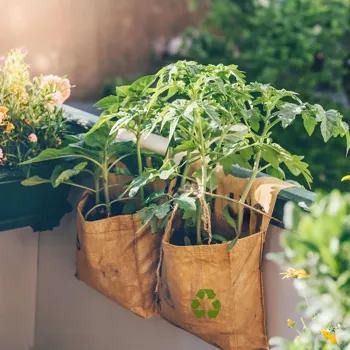
Organic fertilizers are made from natural materials like compost, manure, and bone meal. They release nutrients slowly over time and improve soil health. Inorganic fertilizers, on the other hand, are chemically synthesized and provide a quick boost of nutrients.
Choose a fertilizer that is appropriate for the type of plants you are growing. For example, flowering plants need more phosphorus, while leafy greens need more nitrogen. Follow the instructions on the fertilizer packaging carefully. Over-fertilizing can be just as harmful as under-fertilizing.
You can also use homemade fertilizers like diluted compost tea or banana peel fertilizer. Compost tea is made by steeping compost in water and is a great way to add nutrients to the soil. Banana peels are rich in potassium and can be buried near the roots of your plants.
Pest Patrol: Keeping Unwanted Guests Away
Pests and diseases can wreak havoc on your urban garden. The key is to be vigilant and catch problems early on. Regularly inspect your plants for signs of pests or diseases, such as holes in leaves, wilting, or discoloration. Common pests in urban gardens include aphids, mealybugs, and spider mites.
You can control most pests with organic methods, such as neem oil sprays or insecticidal soap. Neem oil is a natural pesticide that is effective against a wide range of pests. Insecticidal soap is another good option for controlling aphids and other soft-bodied insects.
You can also try attracting beneficial insects to your garden, such as ladybugs and lacewings. These insects prey on pests and can help keep your garden healthy. Remove any diseased plants immediately to prevent the spread of disease.
Make sure your plants have good air circulation to prevent fungal diseases.
Choosing Plants Wisely: Right Plant Right Place
Not all plants are created equal when it comes to urban environments. Choosing the right plants for your space and climate is crucial for success. Consider your local climate, the amount of sunlight your space receives, and the available space you have.
Some plants, like tomatoes and peppers, need a lot of sunlight and space, while others, like herbs and leafy greens, can thrive in smaller spaces with less sunlight. Opt for compact varieties of vegetables and fruits that are specifically bred for container gardening.
Some good options for urban gardens include tomatoes, peppers, eggplants, beans, spinach, lettuce, and herbs. Also, consider growing plants that attract pollinators like bees and butterflies.
These plants will not only add beauty to your garden but will also help pollinate your vegetables and fruits.
Reap the Rewards: Harvesting and Enjoying Your Bounty
The best part of urban gardening is harvesting and enjoying your own homegrown produce! Knowing when to harvest is key to getting the best flavor and texture. For vegetables, harvest when they are ripe but not overripe. For herbs, harvest regularly to encourage new growth.
Use your fresh herbs and vegetables in your cooking, or share them with friends and neighbors. Urban gardening is not just about growing your own food, it's about connecting with nature, learning new skills, and building community. So, get out there and start your urban gardening journey today!
It's a rewarding and fulfilling experience that will bring joy to your life. Don't get stressed out if things fail. Gardening is more of an experiment. Every failure takes you closer to success.
AI Generated Content. Glance/InMobi shall have no liability for the content